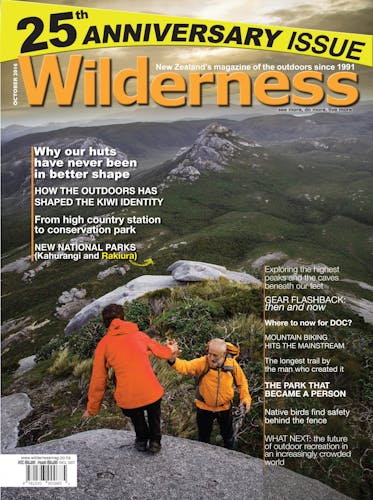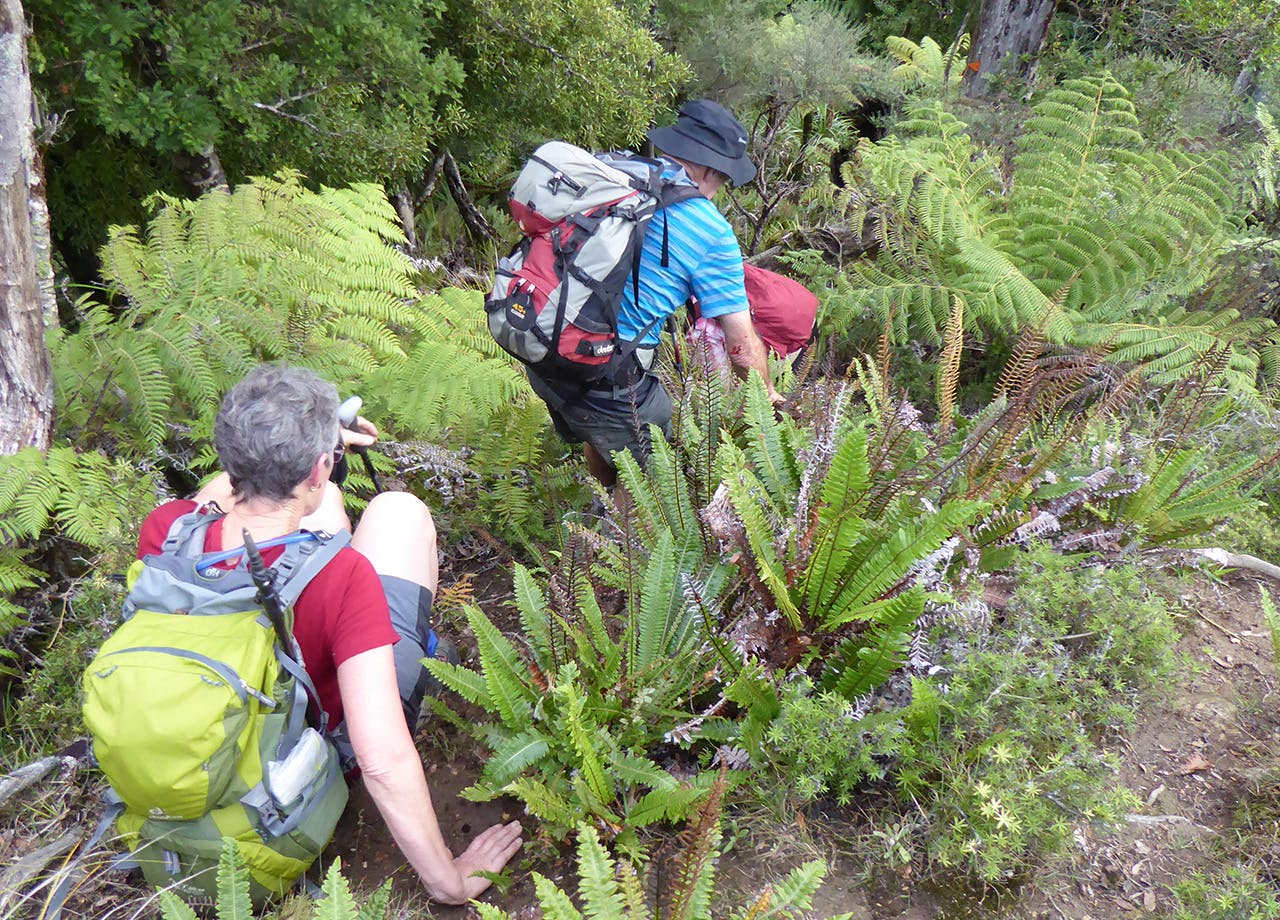- Distance
- 8.95km
- Total Ascent
- 622m
- Time
- 6.5-10hr
- Grade
- Difficult
- Access
- Kiwi Road off SH40
- Map
- BH31
- Links/Files
-
Download the route notes, map and GPX file
Kiwi Road to Mt Messenger, Mt Messenger Forest, Taranaki
This trip nearly turned into a hard day’s night.
We were aware the route wasn’t going to be the easiest navigationally. Some homework had been done and the information indicated that the track was rough and the markers elusive.
We started at Kiwi Road, which is easier than coming the other way from Mt Messenger. After a drive of about 9km of winding, narrow, bush-clad road and one tunnel we came out into open farmland – Rerekapa Station – and an unmarked stile near a large silo pit, the start of our day’s walk.
About 50m across the farm, there is a large orange DOC marker. So, off we went over the green grass and commenced a hand-over-fist short but sharp climb to the ridge, through a fence and presumably onto conservation land with the change from farmland to stunted bush. After some searching, markers were found and we enjoyed a pleasant stroll along the ridge.
Somewhere along the way, we lost our markers, but then thought we had found a good substitute – small reflective pieces of metal – and fell into the trap of following them. Not a good move. When things didn’t feel right, a GPS and compass check revealed wrong place – wrong ridge.
After hauling ourselves back up the ridge but still not finding markers, the decision was made to bush-bash to our next known waypoint. Down into a steep gully, clutching the thick vegetation and then an almost vertical climb up, fighting the forest as we edged closer to our chosen destination. And there, on Huanui (353m), markers were found again with the remnants of a good track.
We made slow and steady progress, following the ridge tops with some stiff climbs up and over high points and down through saddles.
We skirted around the side of Oenone trig at 351m and continued across the tops, gasping at the razorback nature of some of the sheer cliff and slip faces which were a feature of sections of the track.
Much of the track was overgrown but there were pleasant stretches where it passed through fairly open mixed tawa and kamahi forest and crown fern interspersed with small patches of hard beech forest.
A highlight occurred when one of the group spotted a white hedgehog snoozing in the leaf litter.
We later sent photos to DOC at the New Plymouth office and the biodiversity supervisor seemed to be as intrigued as we were at such a find. He told us that this is a rare occurrence in the normal hedgehog species with the genetic mutation of albinism.
After some hours on the go and with darkness approaching, a night in the bush seemed a distinct possibility.
We checked our GPS, which indicated possibly another hour or two to go, so with torches on we moved forward slowly, keeping in close contact with one another and taking extreme care on the narrow ridges which dropped away steeply into deep valleys below.
After what seemed an eternity of working our way down the last steep knee-crunching ridge, often on our backsides to ensure no slipping, we descended into a meadow of regenerating kahikatea swamp. Unfortunately in the darkness we were not able to appreciate its probable beauty, and crawled our way up the steep track to the road and our vehicle and one very relieved driver.







